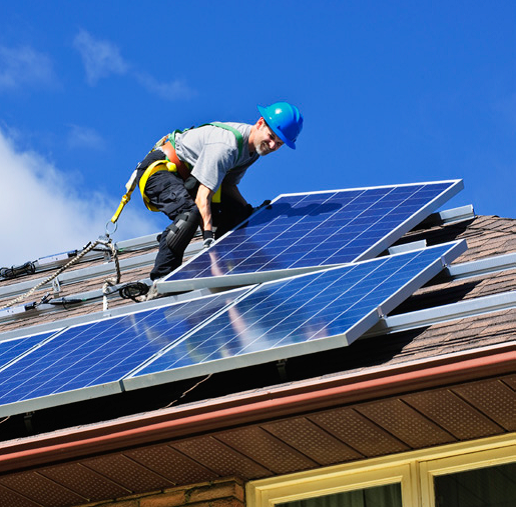What happens when the batteries from electric vehicles (EVs) are no longer usable? We could throw them away, sure, but there are other options, including reuse and recycling. Several automakers are piloting efforts in these areas, with promising results.
Batteries are retired either because the car itself is retired, usually after 10-15 years on the road, or because the owner wants to replace the battery (though, to date, this isn’t particularly common). But retired batteries often have about 70% of their capacity left—more than enough to establish a secondary market, where the battery can offer all sorts of applications. A secondary market is attractive to automakers, as it increases the value of batteries, and to consumers, as they can recoup some of the battery’s cost. And these batteries have a lot to offer! So some automakers and researchers are looking into how these batteries can be reused.
Pairing the used batteries with renewable electricity sources, like wind and solar, has a lot of potential. We know that renewable electricity sources are variable: they don’t always produce energy when we want it, but rather when the sun shines or the wind blows. Therefore, pairing a battery that can store some of that energy when it’s not being directly used could help with reliability. And there are a couple options for reuse with renewables being pursued by industry today: at the household and commercial scales.
Reuse EV Batteries for Residential Solar
 The first option is for use in homes. For example, your neighbor has a solar panel on their roof and while they’re at work the sun shines producing electricity, but they use more electricity when they’re home in the evenings and need to turn on the lights. By putting together an old EV battery and the solar panel, they would be able to use a certain amount of electricity generated during the day at night for their lights. Using old EV batteries is one application, but you can also make new batteries to pair with renewable electricity sources. Tesla is making new batteries and putting a lot of effort into this household example of battery storage and renewables.
The first option is for use in homes. For example, your neighbor has a solar panel on their roof and while they’re at work the sun shines producing electricity, but they use more electricity when they’re home in the evenings and need to turn on the lights. By putting together an old EV battery and the solar panel, they would be able to use a certain amount of electricity generated during the day at night for their lights. Using old EV batteries is one application, but you can also make new batteries to pair with renewable electricity sources. Tesla is making new batteries and putting a lot of effort into this household example of battery storage and renewables.
Reuse EV Batteries for Wind and Solar Farms
Another option is piling these used EV batteries up and tying them to larger installations of renewable energy, like a wind or solar farm. Wind and solar farms are often funded by utilities or private companies, but then sell the electricity to consumers. More batteries are required to store more energy, but then can also power larger buildings like offices or many houses. GM has decided to use old Chevy Volt batteries to store energy from solar and wind nearby and then use the energy from the batteries at its headquarters. And earlier the same week, Nissan threw their hat into the ring, announcing their partnership with Green Charge Networks to sell used Leaf batteries to companies.
Since many EVs and their batteries have not retired yet, we don’t know which battery end use is going to be most common—reuse, recycling, or just tossing them out. Certainly, we hope reuse or recycling of these batteries happens to utilize the remaining charge of the batteries and reduce the material constraints on new batteries that could lead to more greenhouse gas emissions. But a lot of this falls to which process is most cost-effective; with EVs just beginning to retire, it’s an exciting time to see what will happen.
